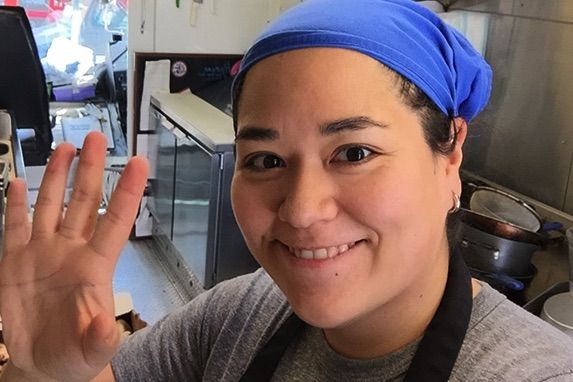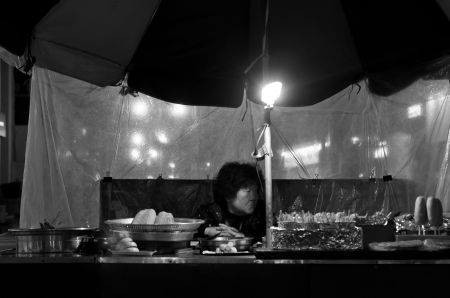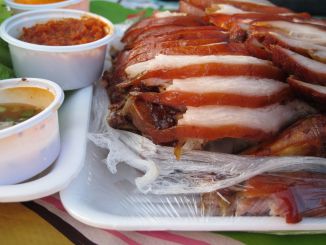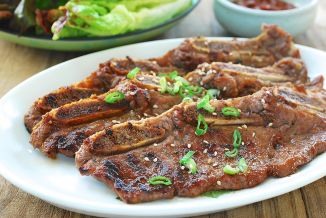FOOD
LA: The Birthplace of the Nuevo Taco
Written by Ben FordTRADITIONAL taco trucks and roadside pop-ups have a long history in Los Angeles. But the idea of what a taco is has changed dramatically. Korean influences are the most recent,but the notion of what a taco is was up for grabs decades prior to its acceptance in the United States. Similar to the United States,Mexico is a melting pot with influences ranging from Asian to Middle Eastern. Al Pastor is a great example of this; it’s actually a Lebanese dish that over a couple generations morphed from lamb cooked on a vertical rotisserie and served on a pita-like bread into a pork dish made with pineapple. So the fact that we are seeing the concept of a taco being pushed even further here in Los Angeles, where we have a rich and diverse population, is only to be expected. Roy Choi is a chef of the people and knows Los Angeles extremely well. He understands the streets—having literally built this empire off of Kogi food trucks. It therefore makes perfect sense that he would be the one to blend the cultural influences that we both grew up with into an innovative brand and a food concept that would change the face of cuisine not just in Los Angeles, but the whole country. When Korean and Mexican cultures collided in Los Angeles, Roy was there to develop the Korean Taco; and the world was made forever a better place.Today in Los Angeles, even the most traditional of Mexican taco trucks are enjoying their customers’ expanding and adventurous palates. And it’s not just food trucks that are serving them up; the twist on the taco has even caught the eye of fine dining chefs such as José Andrés, who is also taking liberties with the concept and creating tacos at the SLS Hotel in Beverly Hills. One of his offerings is the Japanese taco: thin-shaved cucumber cradles BBQ freshwater eel fillets sprinkled with black sesame seeds, shiso, wasabi and crunchy chicharron. The taco is definitely a fixture in the Los Angeles society and is here to stay for good, but only time will tell what it will taste and look like.
Ajumama’s Laura Lee
Written by Anthony Al-JamieEast Meets Midwest: Gourmet Food Truck is a Driving Force in Columbus, Ohio’s Food Scene
Laura Lee’s gourmet food truck, called “Ajumama,” has gained popularity for serving authentic Korean fare with a creative American-twist. While Korean tacos have become popular dishes at food trucks around the U.S., Laura focuses on combining familiar Midwestern dishes with traditional Korean dishes that are probably unknown to most non-Koreans. Seoul Journal’s Executive Editor Anthony Al-Jamie spoke with Laura Lee, who is a classically trained chef, about her unique approach to Korean cuisine and the pros and cons of running a food truck.
Complete Guide to Korean Street Food
Korean street food is part of the adventure when traveling in Korea. However, some people are like two-year-old children — they’ll just put anything in their mouths! If you’re a little more concerned about what it is you’re actually eating, check out this complete guide to Korean street food!
Chef Corey Lee
Written by Anthony Al-JamieWise Man From the East Becomes Wise Chef of the West
Chef Corey Lee, whose Korean name is Dong Min (meaning “Wise Man from the East”), is a Korean-born, American-trained chef. In 2010, Lee opened the award-winning restaurant, Benu, in San Francisco, which received the highest possible Michelin Guide rating of three stars in 2014. Lee moved to the U.S. from Korea when he was five and settled in New Jersey. Although his home at the time kept two refrigerators, one for Korean food and one for American, he says that the food at Benu is about how those two can coexist. Corey Lee shared his views on food with Seoul Journal's Executive Editor Anthony Al-Jamie.
Two Popular Korean Dishes that I Personally Enjoy Commonly are Made Up Entirely of Feet.
They may not be the first dishes people are drawn to, but eventually your taste buds adapt. Eating in Korea is a bit like a game. Level one is for the newbies and encompasses meals like galbi 갈비 (grilled meat), bibimbap 비빔밥 (a mix of rice, vegetables and a spicy pepper paste) and mandu-guk 만두국 (dumpling soup). These are the meals you take visiting friends and family out for because they may not be as adventurous as you [are] if you have lived in Korea for a year or more. As foreigners develop a taste for these meals, they gradually start tasting the side dishes, which tend to be fermented and spicier thereby developing taste buds for some of the other Korean main dishes. Level five might encompass such dishes as sannakji 산낙지 (live octopus) or kimchi jjiggae 김지찌개 (kimchi stew) and jok-bal 족발 (pig’s feet). As you go higher, you get into the foods that you may have thought to be inedible, like chicken feet 닭발.
How to Make Galbi
Written by Hyosun RoGalbi
No visit to Korea is complete without trying Korean barbecue that’s grilled in front of you over an open flame. If you can’t make a trip to Korea, you can also enjoy delicious Korean barbecue at home. Galbi (beef short ribs) is one of the most popular barbecue dishes in Korea, especially for special occasions and gatherings. Delicious Korean barbeque is all about the marinade, and it’s easy to prepare!















